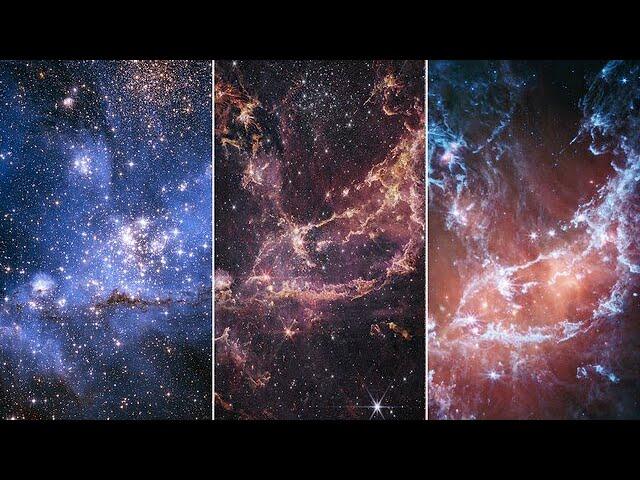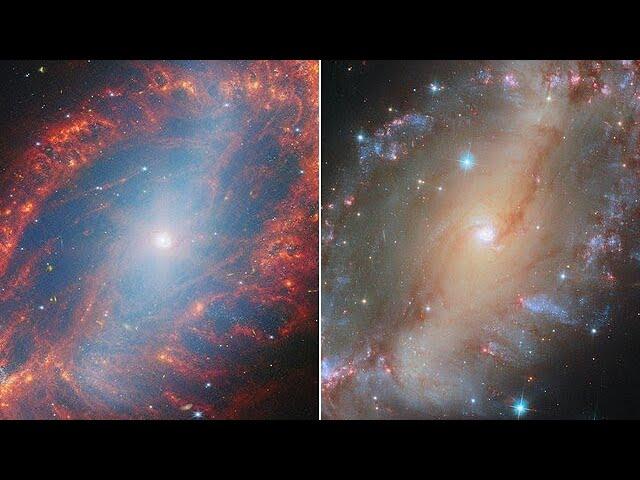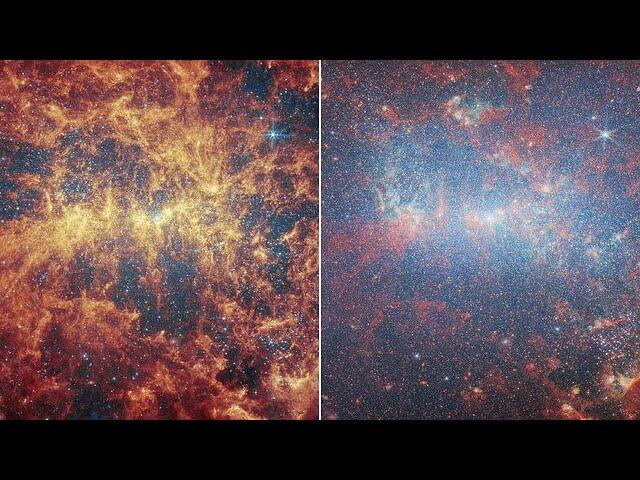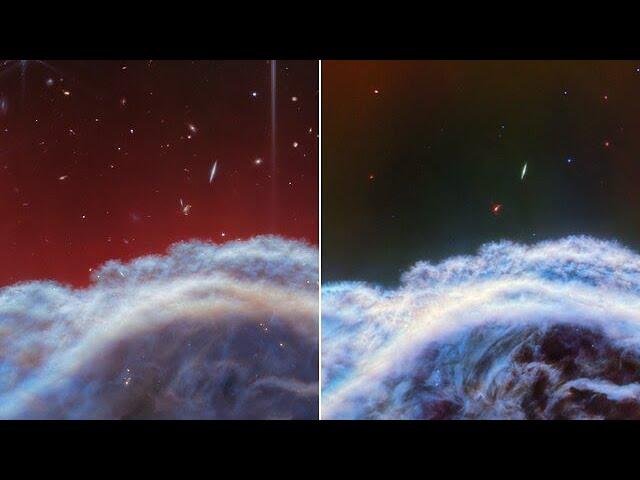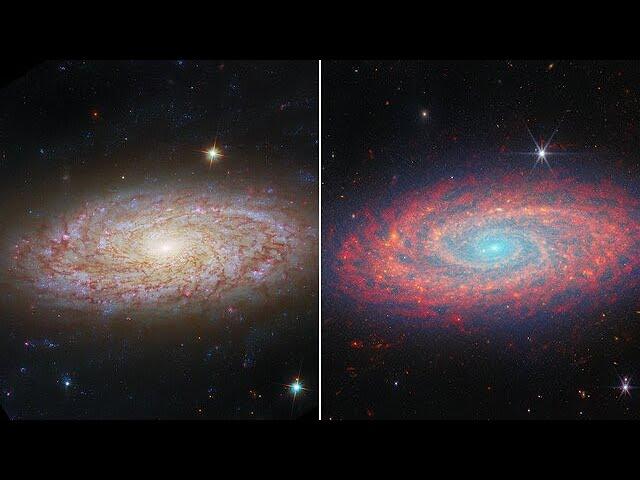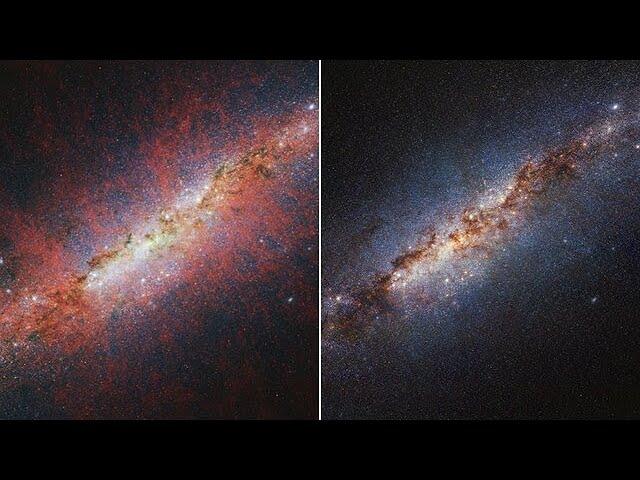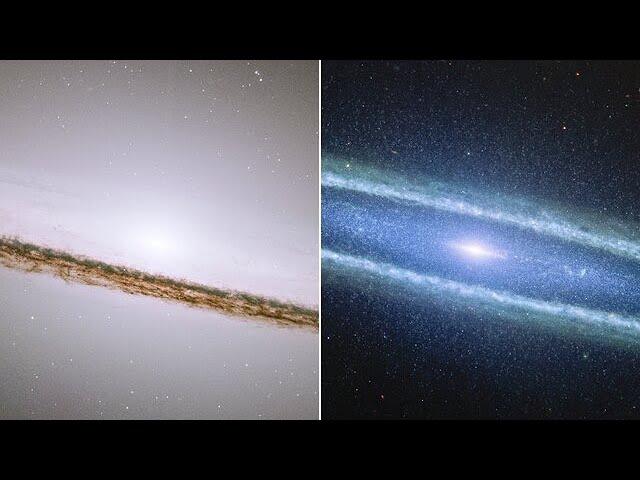Transition video: Hubble and Webb's views of NGC 4449
Description
This video highlights Webb’s two views of the dwarf galaxy NGC 4449. This galaxy, also known as Caldwell 21, resides roughly 12.5 million light-years away in the constellation Canes Venatici. It is part of the M94 galaxy group, which lies close to the Local Group that hosts our Milky Way.
The first image is a 2005 image (released in 2007) from the NASA/ESA Hubble Space Telescope of the dwarf galaxy NGC 4449. Hundreds of thousands of vibrant blue and red stars are visible in this image. Hot bluish-white clusters of massive stars are scattered throughout the galaxy, interspersed with numerous dustier reddish regions of current star formation. Massive dark clouds of gas and dust are silhouetted against the flaming starlight.
The second was captured by two instruments on the NASA/ESA/CSA James Webb Space Telescope: MIRI (Mid-InfraRed Instrument) and NIRCam (Near-InfraRed Camera). Observations in the infrared reveal the galaxy’s creeping tendrils of gas, dust and stars. The bright blue spots reveal countless individual stars, while the bright yellow regions that weave throughout the galaxy indicate concentrations of active stellar nurseries, where new stars are forming. The orange-red areas indicate the distribution of a type of carbon-based compounds known as polycyclic aromatic hydrocarbons (or PAHs) — the MIRI F770W filter is particularly suited to imaging these important molecules. The bright red spots correspond to regions rich in hydrogen that have been ionised by the radiation from the newly formed stars. The diffuse gradient of blue light around the central region shows the distribution of older stars. The compact light-blue regions within the red ionised gas, mostly concentrated in the galaxy’s outer region, show the distribution of young star clusters.
Credit: ESA/Webb, NASA & CSA, A. Adamo (Stockholm University) and the FEAST JWST team, N. Bartmann (ESA/Webb)
Music: Stellardrone - The Night Sky in Motion

